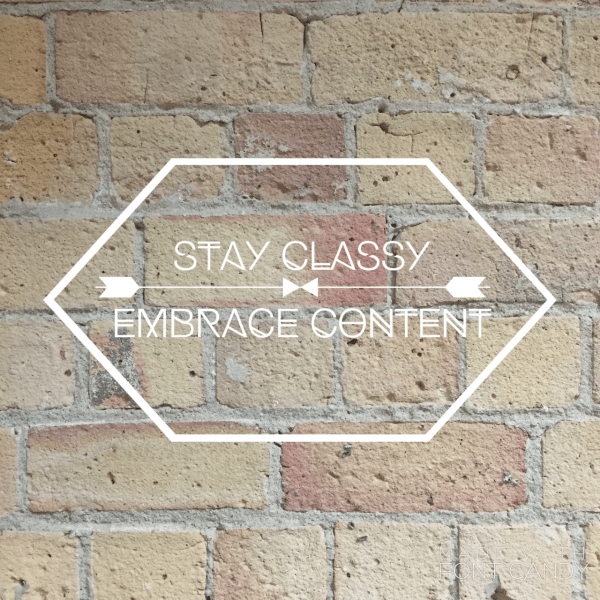By Mikela Dennison, Account Manager, The Clarity Business
Do you know how your target audience feels about that sponsored 'news' content you got placed on a local media website? Or do you know the key source of news for today's decision-makers?
Whether you answered yes or no, the Reuters Institute Digital News Report for 2015 is well worth a read.
You can peruse the full report at your leisure, or if you are one of the many millions of time-poor, info-hungry people around the world, check out this short 100 second video of the report's key findings.
"This year's data shows a quickening of the pace towards social media platforms as routes to audiences, together with a surge in the use of mobile for news, a decline in the desktop internet and significant growth in video news consumption online."
Building on the blog post from our newest team member Dylan Brown last week on why news content and social media go hand-in-hand, Reuters' new research shows that in just three years (2012 – 2015) social media has absolutely outstripped print media as the main source of news. What does this mean for your business?
It means you can no longer delay embracing social media
Don't underestimate the power of social media to get your company news, commentary, reviews and research out to your audience.
Of course getting a news story 'on the page' is always a critical component of your media activity, and that will probably not change for a good few years to come. We work on a daily and weekly basis to connect our clients and their knowledge with media, always taking the approach to 'tell, not sell', because well-formed opinion and research is always going to be of use for time-poor journalists.
However, if a well-timed, well-written tweet from a widely followed Twitter user will get thousands more impressions and significantly higher levels of engagement in your content, can you still ignore the value of that channel? Wouldn't it be wise to utilise both traditional media platforms and social media channels?
Native advertising under threat
This week, a big topic of conversation in our Generator workspace, has been the onslaught of options for viewing television programmes. Netflix, Neon, Lightbox - you name it, we're talking about it. But the convo about how we can best watch Orange is the New Black, or Bloodlines, quickly turned to the fact that adverts will (or already have) become a thing of the past.
And the picture for the non-television world is no different.
Reuters' research highlights that digital advertising is increasingly under threat. A whopping 47% of US respondents regularly use ad blockers, and 39% of respondents in the UK use them.
What does this mean for your brand?
You can't rely solely on advertising to get your message in front of your target audience.
Increasingly, audiences even feel deceived by native advertising (when ads are written in the same style as editorial content, often emerging as sponsored content), which was seen as a viable alternative when banner and display ads got on the ropes.
Due to the growing sophistication of native advertising (i.e. it is often seamless and hard to detect) readers can often feel like they've been fooled.
Interestingly, younger respondents (18 – 24 year olds) had more positive feelings towards sponsored and native advertising which is useful to keep in mind if that's your target audience.
An opportunity to create original, interesting content
So then, with all this in mind, what are your options as an organisation that needs to communicate and connect with your target audience to achieve your business objectives?
The need for interesting, original content that gives knowledge and information that's of value to your target community has never been more pressing. The popular communications site Ragan Daily summarises 7 reasons to love brand journalism.
While we view the practice more as content creation rather than brand journalism (largely because we respect our media mates too much!), the value of taking a content-led approach rather than relying solely on advertising is too strong to ignore.
We summarise the key points of the Ragan article for you below:
1. It controls the storytelling.
2. It connects directly with the audience.
3. It transforms creativity in brands.
4. It boosts credibility.
5. It increases sharing.
6. It brings high ROI.
7. It factors in the "Ron Burgundy" approach.
Stay classy: adopt a content-led approach as your key communications tool
Adopting content as your key communications tool is an effective way to move with the times, to avoid the risks of native advertising, and to provide your readers with bite sized, snackable and shareable content that will ensure you stand out from your competitors and don't get left behind in a rapidly evolving media and social media landscape.
If you want to discuss the report's findings over a coffee, or you'd like to find out how we help clients to use content to get into the media, through social media, in front of the people who affect your business objectives, then we'd love to hear from you. Tweet us at @ShapeTheMessage or drop us a line:mikela@theclaritybusiness.co.nz
Do you know how your target audience feels about that sponsored 'news' content you got placed on a local media website? Or do you know the key source of news for today's decision-makers?
Whether you answered yes or no, the Reuters Institute Digital News Report for 2015 is well worth a read.
You can peruse the full report at your leisure, or if you are one of the many millions of time-poor, info-hungry people around the world, check out this short 100 second video of the report's key findings.
"This year's data shows a quickening of the pace towards social media platforms as routes to audiences, together with a surge in the use of mobile for news, a decline in the desktop internet and significant growth in video news consumption online."
Building on the blog post from our newest team member Dylan Brown last week on why news content and social media go hand-in-hand, Reuters' new research shows that in just three years (2012 – 2015) social media has absolutely outstripped print media as the main source of news. What does this mean for your business?
It means you can no longer delay embracing social media
Don't underestimate the power of social media to get your company news, commentary, reviews and research out to your audience.
Of course getting a news story 'on the page' is always a critical component of your media activity, and that will probably not change for a good few years to come. We work on a daily and weekly basis to connect our clients and their knowledge with media, always taking the approach to 'tell, not sell', because well-formed opinion and research is always going to be of use for time-poor journalists.
However, if a well-timed, well-written tweet from a widely followed Twitter user will get thousands more impressions and significantly higher levels of engagement in your content, can you still ignore the value of that channel? Wouldn't it be wise to utilise both traditional media platforms and social media channels?
Native advertising under threat
This week, a big topic of conversation in our Generator workspace, has been the onslaught of options for viewing television programmes. Netflix, Neon, Lightbox - you name it, we're talking about it. But the convo about how we can best watch Orange is the New Black, or Bloodlines, quickly turned to the fact that adverts will (or already have) become a thing of the past.
And the picture for the non-television world is no different.
Reuters' research highlights that digital advertising is increasingly under threat. A whopping 47% of US respondents regularly use ad blockers, and 39% of respondents in the UK use them.
What does this mean for your brand?
You can't rely solely on advertising to get your message in front of your target audience.
Increasingly, audiences even feel deceived by native advertising (when ads are written in the same style as editorial content, often emerging as sponsored content), which was seen as a viable alternative when banner and display ads got on the ropes.
Due to the growing sophistication of native advertising (i.e. it is often seamless and hard to detect) readers can often feel like they've been fooled.
Interestingly, younger respondents (18 – 24 year olds) had more positive feelings towards sponsored and native advertising which is useful to keep in mind if that's your target audience.
An opportunity to create original, interesting content
So then, with all this in mind, what are your options as an organisation that needs to communicate and connect with your target audience to achieve your business objectives?
The need for interesting, original content that gives knowledge and information that's of value to your target community has never been more pressing. The popular communications site Ragan Daily summarises 7 reasons to love brand journalism.
While we view the practice more as content creation rather than brand journalism (largely because we respect our media mates too much!), the value of taking a content-led approach rather than relying solely on advertising is too strong to ignore.
We summarise the key points of the Ragan article for you below:
1. It controls the storytelling.
2. It connects directly with the audience.
3. It transforms creativity in brands.
4. It boosts credibility.
5. It increases sharing.
6. It brings high ROI.
7. It factors in the "Ron Burgundy" approach.
Stay classy: adopt a content-led approach as your key communications tool
Adopting content as your key communications tool is an effective way to move with the times, to avoid the risks of native advertising, and to provide your readers with bite sized, snackable and shareable content that will ensure you stand out from your competitors and don't get left behind in a rapidly evolving media and social media landscape.
If you want to discuss the report's findings over a coffee, or you'd like to find out how we help clients to use content to get into the media, through social media, in front of the people who affect your business objectives, then we'd love to hear from you. Tweet us at @ShapeTheMessage or drop us a line:mikela@theclaritybusiness.co.nz

